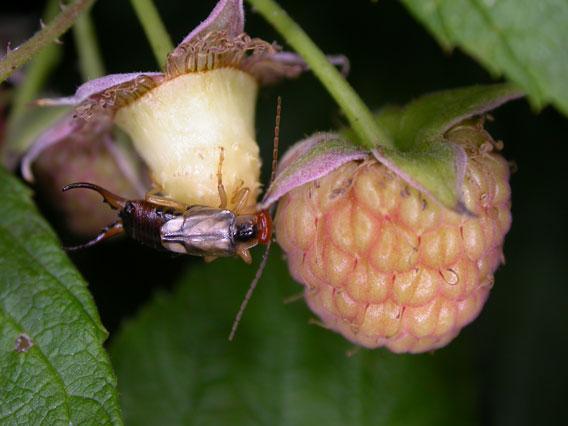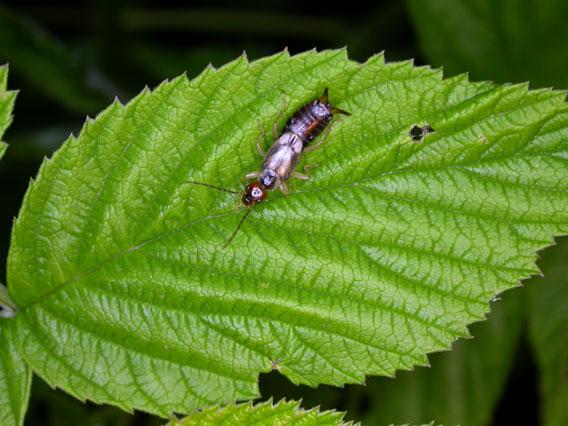Earwigs Around the Home and Garden
May 2006
European earwigs, often called pincherbugs, are some of the most readily recognized insects around home gardens and landscapes. They can also be one of the most frustrating to control. Larger-than-normal earwig populations that began last fall have become more than just a nuisance for many home gardeners. Earwigs have also irritated many homeowners who repeatedly find them indoors.Despite many myths, earwigs are not aggressive and rarely pinch. Pinching is a defense mechanism that is only used when the earwigs are provoked. Another myth is that earwigs cannot fly. This is also false. Earwigs are very good flyers and are often attracted to lights at night. They only have one generation per year, and are most active and noticeable during the spring and fall. During the winter and summer they primarily go unnoticed down in the soil.
Earwigs are generally considered beneficial due to their predation on small organisms like aphids and mites. However, they can also damage plants by feeding on newly developing tissues. This damage is most pronounced in young plants in the cotyledon stage or on plants with only a few true leaves; plants that are too small to be able to compensate for the losses. For example, new bean and bell pepper plants can be killed or severely stunted when earwigs chew holes in the leaves or kill the growth terminal. The same is true for annual flowering plants emerging from seed or recently transplanted into a landscape. As annual plants mature, however, this damage becomes much less significant; mature landscape plants or perennial shrubs are relatively unaffected.The first line of defense against earwigs is to remove environmental conditions that favor them. This includes areas that are cool and moist with lots of organic plant matter, such as layers of leaf litter under shrubs and trees that are frequently rewetted by landscape irrigation. These conditions were difficult to remove this spring due to the prolonged rainy season, but will be easier to obtain as the weather becomes hotter and dryer.
Hotter, dryer weather is also the optimal time to use trapping as an earwig removal strategy. This is accomplished by putting wet roles of newspaper or corrugated cardboard in areas known to have earwigs. After feeding at night the earwigs hide inside the newspaper or cardboard and can be collected and discarded during the day. One easy disposal method is to drown the collected earwigs by shaking the newspaper or cardboard over a bucket of water with a small amount of dish soap; another method is to shake them out onto a hard surface and introduce them to the bottom of a shoe.
If habitat management and trapping are not sufficient, chemical insecticides can be of use. Insecticides containing the chemical carbaryl (Sevin®) can be used on a wide range of plants and will kill some earwigs and deter others. Other broad spectrum insecticides, such as those used in home perimeter treatments can also be effective if they come in direct contact with the earwigs. Be careful, however, to read and strictly follow all label instructions and restrictions prior to their use in order to ensure the safety of people, pets, and the environment.
Additional information on the biology and management of earwigs is available at the University of California Integrated Pest Management web site. Click here for pdf form Earwigs around the Home and Garden


